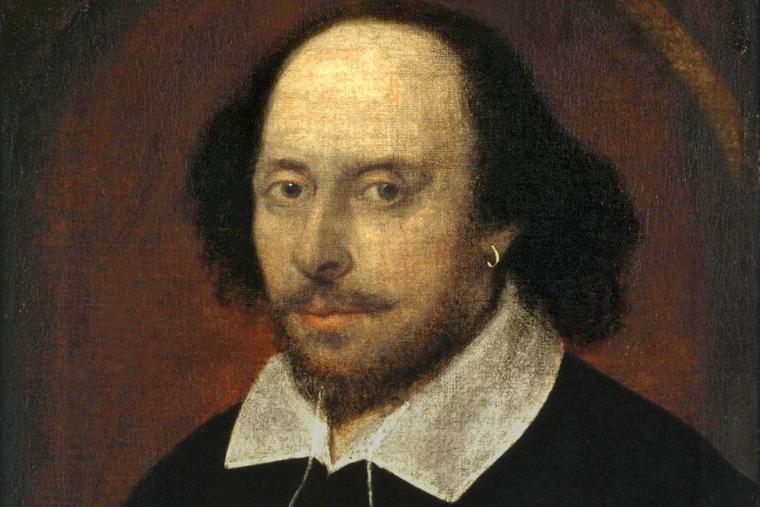- Feb 5, 2002
- 166,574
- 56,207
- Country
- United States
- Faith
- Catholic
- Marital Status
- Married
- Politics
- US-Others
Let’s examine what is actually known of the Bard’s last years.
The 2018 film, All is True, starring Kenneth Branagh as William Shakespeare and Ian McKellen as Shakespeare’s patron, the Earl of Southampton, purports to be a depiction of the Bard’s final years in Stratford following his retirement from the London stage. Making no effort to remain true to the known facts of Shakespeare’s life, preferring instead to follow the path of pride and anti-Catholic prejudice, All is True reinvents him in the image of our own deplorable epoch.
This being so, and as a means of exposing the lie with the clear light of known truth, let’s examine what is actually known of Shakespeare’s last years.
Shakespeare’s last major legal transaction in London, prior to his retirement and return to Stratford, was his purchase in March 1613 of the Blackfriars Gatehouse. Clearly this large property was not bought for the Poet himself to live in. He had already shaken the London dust from his feet and had retired to New Place, the large house in Stratford he had purchased for his family from Catholic recusant friends back in 1597. Why, then, did he buy it? It wasn’t, as some of his biographers have claimed, merely an investment.
An investigation into the history of the Blackfriars Gatehouse reveals that it was “a notorious center of Catholic activities.” As its name would indicate, it had originally belonged to the Dominican Order and had been the lodging of the prior until the dissolution of the monasteries. During the reign of Mary Tudor the mansion was in the possession of Thomas Thirlby, the Catholic Bishop of Ely, who sold it to his cousin, William Blackwell, the town clerk of London. At the latter’s death in 1569, the Gatehouse was inherited by his widow, Mary, née Campion, who was related to St. Edmund Campion, the Jesuit martyr. The papist sympathies of Mary Blackwell are suggested by the fact that the Catholic Bishop of Ely was allowed to lodge at her house until his death in 1570. Further evidence of these sympathies can be seen from the fact that Mary Bannister, the sister of another Jesuit martyr, St. Robert Southwell, was a tenant at the Gatehouse for a time, and from the fact that Katherine Carus, a kinswoman of the Lancashire Hoghtons and the widow of a defiantly recusant judge, had died there “in all her pride and popery.”
Continued below.

 www.ncregister.com
www.ncregister.com
The 2018 film, All is True, starring Kenneth Branagh as William Shakespeare and Ian McKellen as Shakespeare’s patron, the Earl of Southampton, purports to be a depiction of the Bard’s final years in Stratford following his retirement from the London stage. Making no effort to remain true to the known facts of Shakespeare’s life, preferring instead to follow the path of pride and anti-Catholic prejudice, All is True reinvents him in the image of our own deplorable epoch.
This being so, and as a means of exposing the lie with the clear light of known truth, let’s examine what is actually known of Shakespeare’s last years.
Shakespeare’s last major legal transaction in London, prior to his retirement and return to Stratford, was his purchase in March 1613 of the Blackfriars Gatehouse. Clearly this large property was not bought for the Poet himself to live in. He had already shaken the London dust from his feet and had retired to New Place, the large house in Stratford he had purchased for his family from Catholic recusant friends back in 1597. Why, then, did he buy it? It wasn’t, as some of his biographers have claimed, merely an investment.
An investigation into the history of the Blackfriars Gatehouse reveals that it was “a notorious center of Catholic activities.” As its name would indicate, it had originally belonged to the Dominican Order and had been the lodging of the prior until the dissolution of the monasteries. During the reign of Mary Tudor the mansion was in the possession of Thomas Thirlby, the Catholic Bishop of Ely, who sold it to his cousin, William Blackwell, the town clerk of London. At the latter’s death in 1569, the Gatehouse was inherited by his widow, Mary, née Campion, who was related to St. Edmund Campion, the Jesuit martyr. The papist sympathies of Mary Blackwell are suggested by the fact that the Catholic Bishop of Ely was allowed to lodge at her house until his death in 1570. Further evidence of these sympathies can be seen from the fact that Mary Bannister, the sister of another Jesuit martyr, St. Robert Southwell, was a tenant at the Gatehouse for a time, and from the fact that Katherine Carus, a kinswoman of the Lancashire Hoghtons and the widow of a defiantly recusant judge, had died there “in all her pride and popery.”
Continued below.

William Shakespeare Was a Defiant Catholic to the Last
Let’s examine what is actually known of the Bard’s last years.
